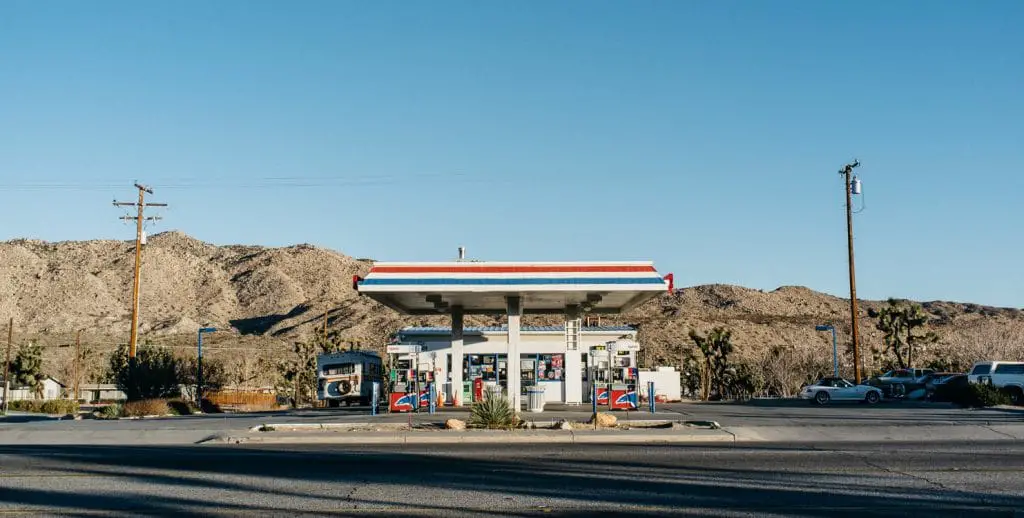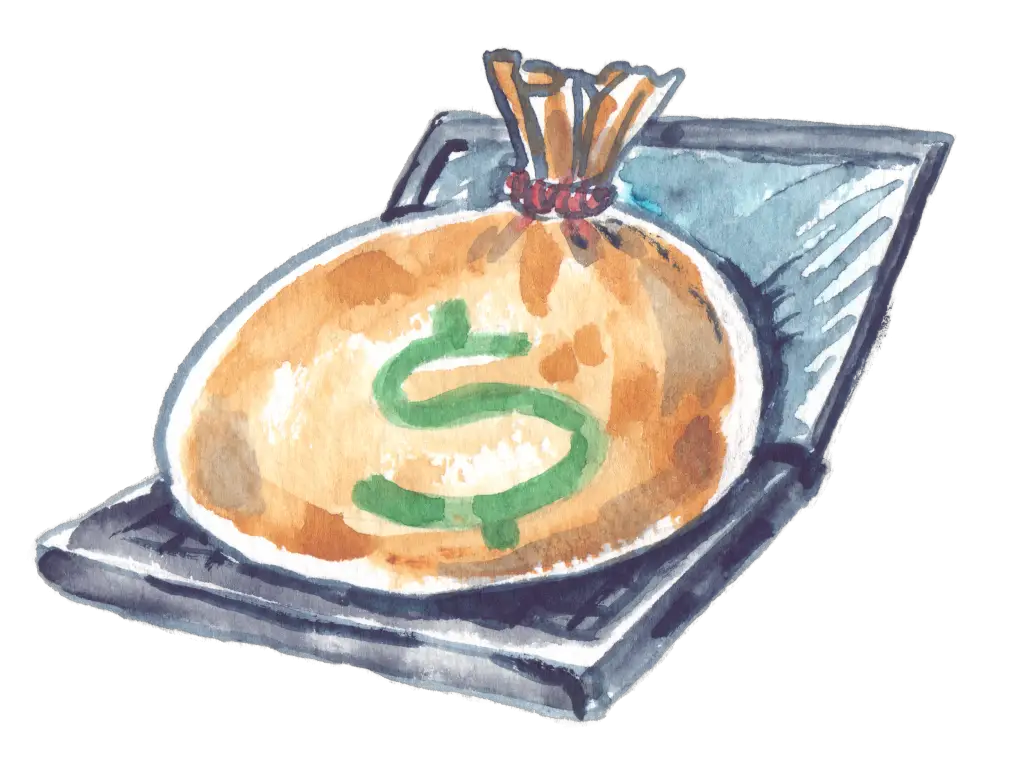
CommonCentsMom.com is advertiser-supported: we may earn compensation from the products and offers mentioned in this article. However, any expressed opinions are our own and aren't influenced by compensation. The contents of the CommonCentsMom.com website, such as text, graphics, images, and other material contained on this site (“Content”) are for informational purposes only. The Content is not intended to be a substitute for professional financial or legal advice. Always seek the advice of your Financial Advisor, CPA and Lawyer with any questions you may have regarding your situation. Never disregard professional advice or delay in seeking it because of something you have read on this website!
Want to know where to fill up your tank for less?
Gas prices are rising through the roof, and they’re only getting higher. Fortunately, it’s still possible to find cheap gas.
GasBuddy recently released where you can find get the cheapest gallons of gas in every state in the US.
Where can you find the cheapest gas?
Answer: Warehouse stores like Costco, Sam’s Club, and BJ’s offer the lowest prices on gasoline. However, you need to be a member.
The overall winner is Costco. In twelve states, especially on the West Coast, the winner is Costco, where you could find prices as low as 19 cents less than the competitors!
However, you must be a Costco member or use a Costco Cash Card to pump gas there.
If you’re not a member and don’t plan to be, there’s a trick for that. You can go to Ebay or a gift card website and get your cash cards there. It’s a little more work, but could be worth the time and effort to save big bucks.
Costco isn’t the cheapest source of gasoline in EVERY state.
In seven states, Sam’s Club is the cheapest. And BJ’s is the cheapest in six. Like Costco, you will need to be a member at their store to take advantage of the deals.
At Sam’s Club, you can still pump gas without a membership. However you won’t be able to get the discounted price.
At BJ’s, you need a membership.
If you don’t have any memberships to any of these large warehouse stores, your best bet is to look for an Arco gas station.
It doesn’t have any requirements, and it can be up to 17 cents lower than the competitors.
Arco is also the winner in size, with over 1000 locations. So if you’re after convenience, it may be the easiest low cost gas station to find near you, wherever you are.
Here’s the full map where you can find the cheapest gas nearby in your state.

Tips on how to save at the pump
1. Become a Wholesaler Member
We all know that wholesalers like Costco and Sam’s Club (for those of you closer to the border) offer items for much cheaper versus traditional grocery stores. The savings these wholesalers offer go beyond groceries and household items, and includes gas. One place that consistently sales gas for less is Costco or Sam’s Club.
I’ve been a Costco member for the last 5 years, it’s annual membership of $55 is well worth it for gas alone. I also took out a Sam’s Club Membership 3 years ago, and I ensure to fill up gas every time I’m in Buffalo for a day shopping trip.
If you drive a standard engine car like my self, you can easily save $3-4 every time with a 60 liter fill up.
2. You Don’t Need Premium
If anyone has ever told you that higher octane gas will help you pass your next emission test or give you better fuel economy – both of these statements are myths. If you own a vintage car or an older clunker, your car can definitely benefit from higher octane fuel.
Even then you don’t need to fill it with high octane fuel often, once a month is plenty. Car technology is ever changing, and today’s cars are built to perform efficiently on regular fuel. I’ll use my car for example, and if you’ve been following FF lately I shared with you that I purchased a BMW, and have been fueling up my entry level luxury vehicle with regular fuel.
Even with regular fuel, I still get great performance and fuel economy, and about once per month I fill up my car with premium fuel to give it that extra care.
3. Mid-Week Gas Is The Most Expensive
Prices do rise in the summer for the simple reasons that the gas blend costs more to produce. The summer gas is more cleaner than the winter gas, therefore resulting in lower emissions during hot summer months.
Furthermore, most people believe that gas prices rise significantly before long weekends, and this may be true in certain parts of the country, however generally this is a myth. Think about it – gas is all about supply and demand. If everyone leaves the city to go drive to the cottage for the weekend, who’ll fill up gas within the city? What would be the point of increasing the gas price at the pumps within the city if everyone goes up to their cottage? Obviously it doesn’t make much sense.
On the contrary, gas prices are most expensive mid-week for two reasons. First, mostly everyone will need to fill up mid-week in order to get through two to three more days of driving to work. Secondly, gas dealers who supply the pumps eliminate their discounts mid-week that they offered to the gas pump owners. Again its comes down to supply and demand.
4. Highway Fuel Is More Expensive
Again we’ll go back to supply and demand. Filling up gas on your trip alongside of the highway will be more expensive.
You need gas, you need it now, and you can’t drive any further unless you fill up, so you’ll pay 10 cents more per liter because you have no other option. If you drove 10 kilometers into town in the same city, you’d pay significantly less per liter.
5. Remove excess items.
Excess weight in your vehicle means you’re spending more in fuel than you really need to, because you’re using up extra fuel in moving that weight. Take out anything that doesn’t have to be in your car, E.g. tools or equipment – clean out the trunk!
6. Watch your speed.
Each vehicle has a different optimum speed with regards to fuel economy, and you can find out the optimum speed of your vehicle from the manufacturer itself. If traveling a long distance, try to keep at the optimum speed to save money. Anything above this speed will be increasingly costly in terms of your gas mileage.
7. Drive with care.
You don’t need to accelerate all the way to the traffic lights or junction, then brake rapidly. It’s not fuel efficient. Wherever possible, let the vehicle slow down of its own accord using its own weight as a brake, and brake when you eventually need to. On the other hand, rapid acceleration also consumes more fuel, so try to increase your speed gradually. You might have to change the driving habits of a lifetime, but it will be worth it in terms of the cash in your pocket.
8. Monitor tire threads & condition.
If your tires are in bad condition, it can mean that you’re spending more on fuel than you need to be. Make sure your tires are properly inflated to a level specified in the manufacturer’s handbook. It improves your gas mileage. Remove snow tires after the winter season as they require more fuel. Well-maintained tires mean a more fuel-efficient vehicle.
9. Kill the A/C.
You don’t need the air conditioning to run all the time – did you know that it uses fuel? Use it sparingly, only on the hottest and stickiest of summer days if necessary. Cracking open the windows while traveling can cause enough of a breeze – but keep in mind that open windows can also lower fuel efficiency at higher speeds. You have to find a happy medium.
While this solution isn’t going to be instantly feasible to everyone, it’s worth keeping in mind when you next switch your vehicle. Consider the type of journeys you will be undertaking and the type of car that will provide for this in the most efficient manner.
10. Coupon hunt!
From time to time, the various gas companies give out coupons for a few cents discount per litre. Husky seem to do this quite frequently. Keep an eye out for coupons. Or even consider using a gas credit card so you get a percentage cash-back when buying from that company.
11. Don’t drive.
While this can seem a little extreme, I don’t mean for you not to drive at all – some trips are necessary. But I am sure that there are some small journeys that you undertake which could be either taken by foot, or by bike, weather permitting.
It’s good for you and will save you on gas. 🙂
In terms of work, consider the possibility of telecommuting – working from home. If you can possibly work from home 1 to 2 days per week, you could be saving hundreds of dollars per year in commuting costs. If you must travel to work, consider car-pooling with someone from your workplace. By sharing with someone, you’re almost halving your commuting costs in an instant.
Final Thoughts
Another suggestion that a friend shared with me is to never fill gas from a gas station that’s getting a fresh delivery of gas. All the fresh fuel that gets dumped to the bottom of the station’s fuel barrels awakens the sediment that’s been sitting there for years and creates unclean fuel.
Eventually all the sediment will drop to the bottom again, but in order to protect your car it’s never wise to pump at the same time that the tanker is replenishing the stations gas.







